Archaeology & History
Here Are 2022’s 12 Most Mind-Blowing Archaeological Discoveries, From Ancient Lice Combs to the World’s Oldest Mummies
Revisit our best stories on the tombs, shipwrecks, and coin hoards unearthed this year.
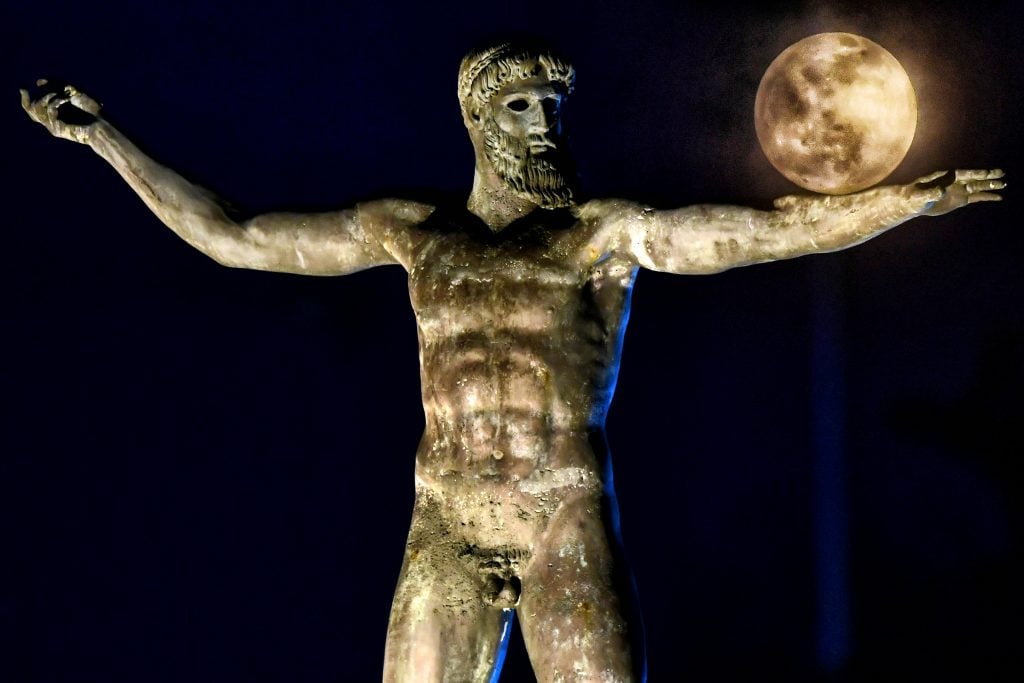
Revisit our best stories on the tombs, shipwrecks, and coin hoards unearthed this year.

Sarah Cascone

It’s perhaps our favorite time of year at Artnet News, when we look back through 12 months of coverage to revisit the best, most exciting stories that have graced our pages. As always, we especially like to revisit our archaeology archives to identify the most astounding, headline-making discoveries that transfixed our readers.
Sifting through a year’s worth of archaeological news, there were no shortage of candidates from 2022.
There were long-lost tombs uncovered during renovations of Notre Dame in Paris, the mosaic floors upon which Santa Claus—well okay, St. Nicholas—once trod, multiple hordes of ancient coins (often found thanks to amateurs armed with metal detectors, but also once by a badger), and the latest discoveries in the Amazon thanks to LiDAR, the laser-powered gift that keeps on giving.
Archaeology even reached across the centuries to connect with current events, as when Ukrainian soldiers digging new defenses against invading Russian forces turned up ancient Greek urns, or when the Olympic Village had to be moved ahead of the Beijing Winter Games because construction unearthed an 800-year-old imperial palace.
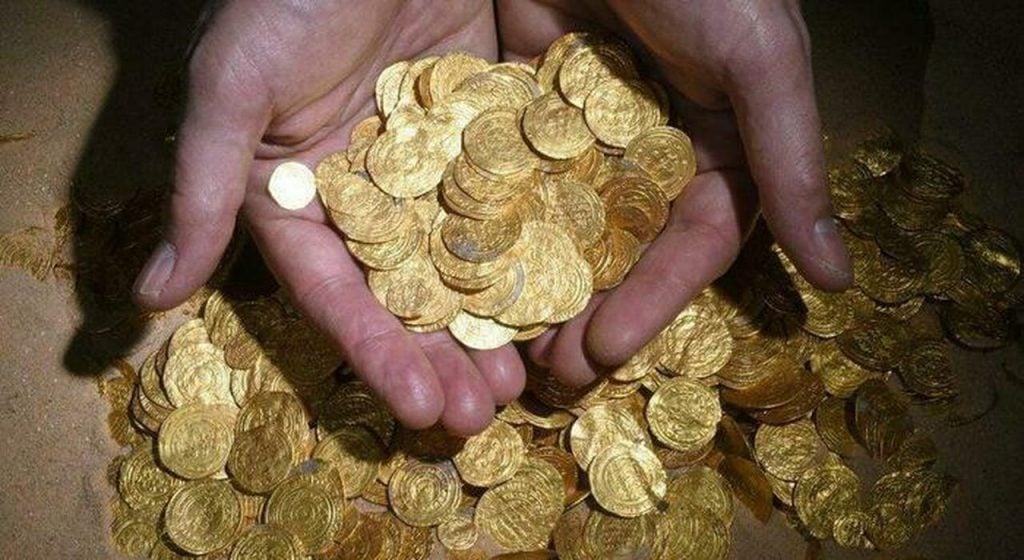
The largest hoard of gold coins found in Israel was discovered in the seabed of a harbor in the Mediterranean Sea port of Caesarea National Park. Photo by Clara Amit courtesy of the Israel Antiquities Authority/EPA.
There were also oddities like a vampire burial, the “Tupperware of Antiquity” found in the ancient Roman city of Falerii Novi, a mysterious ancient board game, Canaanites taking mind-altering drugs, and, in one of the all-time great Artnet News headlines, something about porridge?
Only time will truly tell which of these discoveries matter most for posterity. And you’ll have to stay tuned to see if Arthur’s Stone is really linked to the legendary King Arthur, or if we’ll ever get a definitive answer on the whereabouts of Queen Nefertiti’s tomb—or Cleopatra’s, for that matter.
In the meantime, here are the 12 archaeology stories from 2022 we’ve deemed the most likely to have the staying power to help shape our understanding of human history.
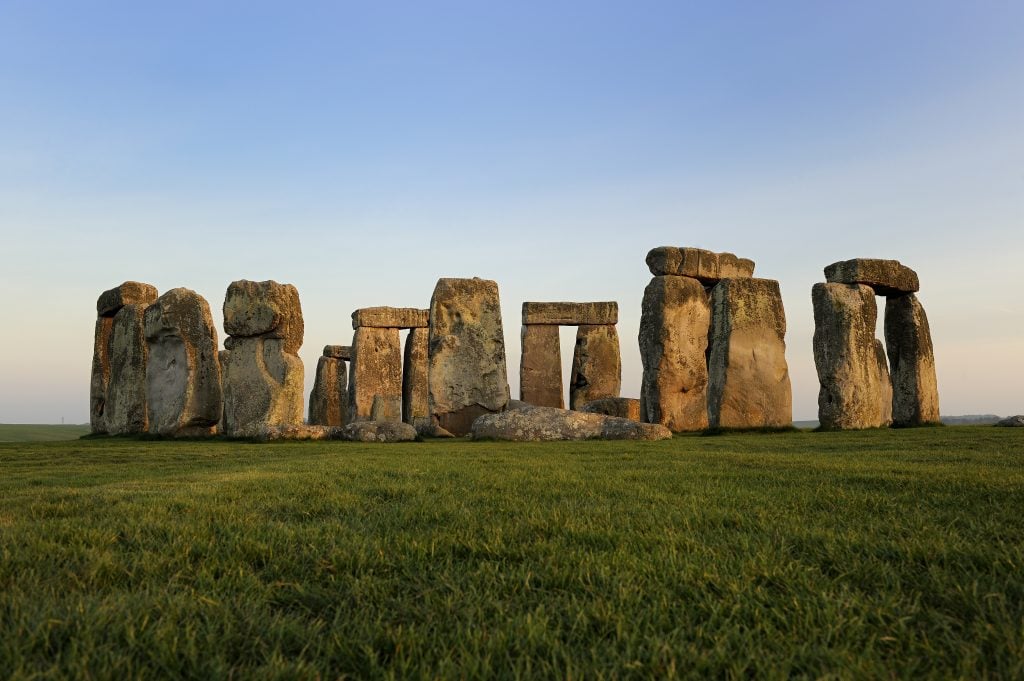
Stonehenge. Photo ©English Heritage.
“The calendar would have served a variety of purposes at the time, according to the author. It let farmers know when to celebrate the harvest festival, or honor certain deities. It also gave physical substance to cosmological beliefs, helped political elites concentrate their power (for he who controls time controls power), and brought communities closer to their gods by ‘ensuring that events occur at propitious moments.’”
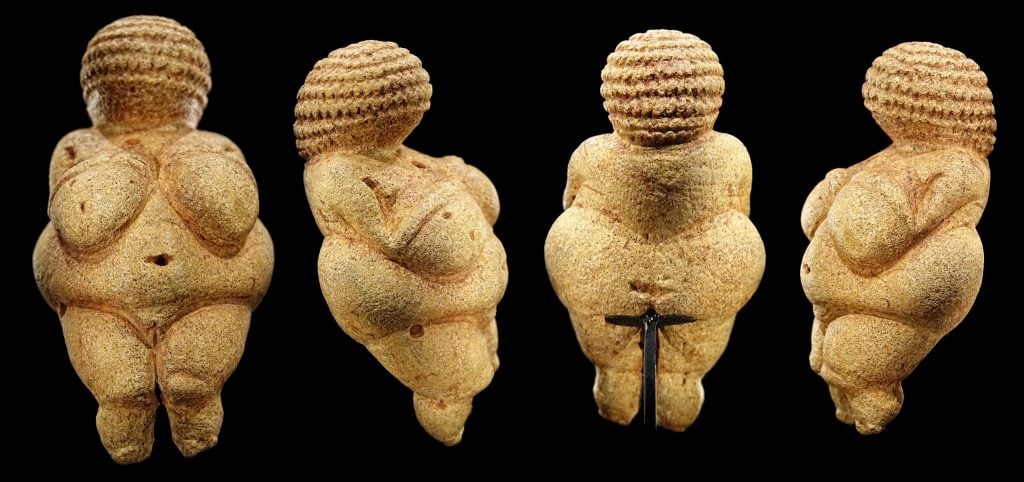
The Venus of Willendorf, from the collection of the Naturhistorisches Museum in Vienna, Austria. Photo by Bjørn Christian Tørrissen, Creative Commons Attribution-Share Alike 4.0 International license.
“Using tomographic techniques to display a cross section of the solid object, scientists determined that the material used in the Venus most likely originates from a region in Northern Italy around 400 miles away. This marks the first time the geologic origins of the object have been confirmed with such specificity.”
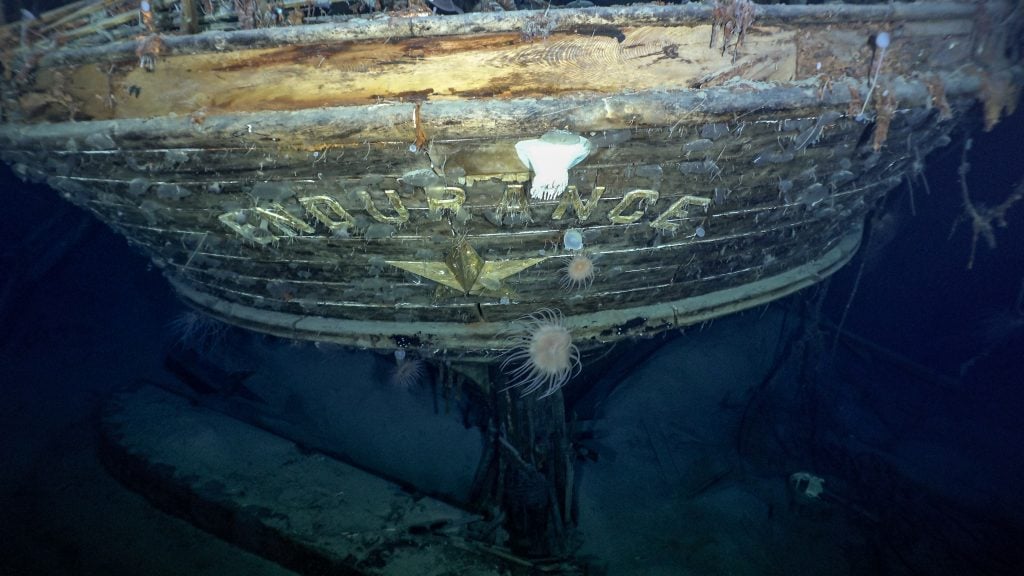
Stern of the Endurance with the name and emblematic polestar. Photo ©Falklands Maritime Heritage Trust/National Geographic.
“The $10 million search for the lost ship was funded by an anonymous donor and organized by the Falklands Maritime Heritage Trust. The expedition left Cape Town in early February aboard the Agulhas II, a South African icebreaker that itself was briefly trapped in ice, forcing operations to pause for a day. But the successful mission otherwise experienced only minor technical glitches with battery-powered submersibles.”
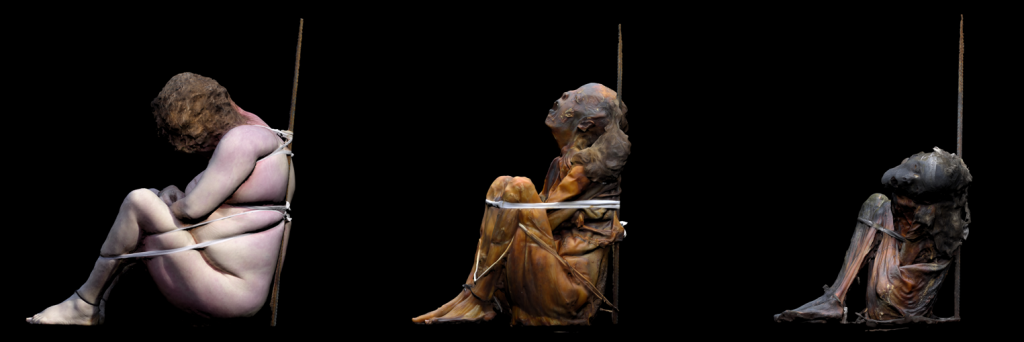
An illustration of guided natural mummification, with reduction of the soft tissue volume. Courtesy of Uppsala University and Linnaeus University in Sweden and University of Lisbon in Portugal.
“Based on what we know about how the body decomposes, as well as observations about the spatial distribution of the bones, archaeologists made deductions about how the people of the Sado Valley handled the bodies of their dead, which they buried with the knees bent and pressed against the chest. As the bodies gradually became desiccated, it appears that living humans tightened ropes binding the limbs in place, compressing them into the desired position.”
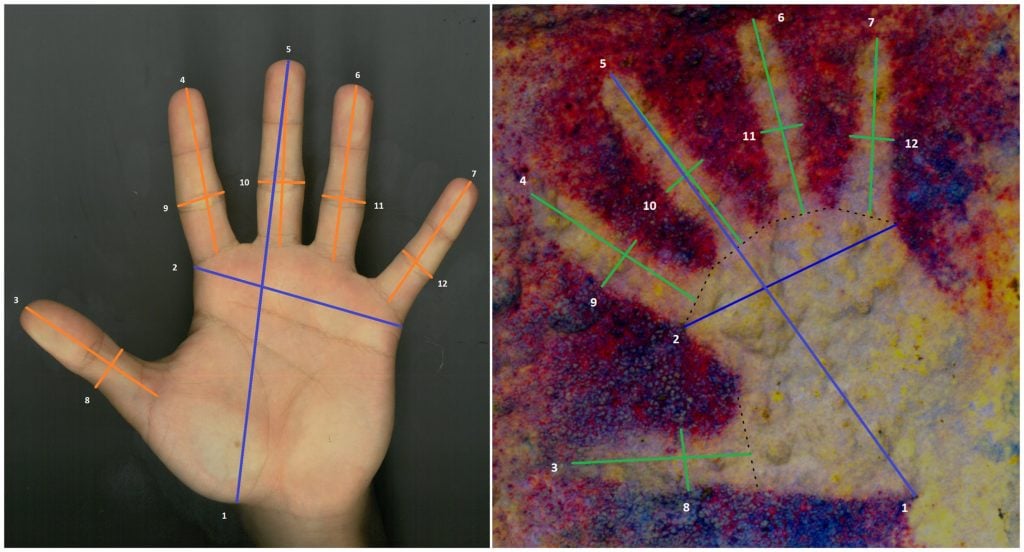
Comparing hand measurement from a contemporary child and an ancient hand painting from a Spanish cave. Photo courtesy of Verónica Fernández-Navarro.
“These prehistoric images would have been made by blowing pigments through a hollow reed or bone onto hands placed against the cave wall—a process that would have made the outlines slightly larger than the hands themselves. Accounting for that difference, the researchers found that up 25 percent of the hand marks were not large enough to belong to adults or teenagers. They guessed that they came from children between two and 12 years of age.”

Members of the Secrets of the Ice team surveying the Lendbreen pass. Photo by Johan Wildhagen, Palookaville.
“In a twist of sad irony, one of the most significant threats posed by climate change is the loss of the ability to study climates of Norway’s past. Some of the discoveries, such as 4,200-year-old reindeer bones, show how species have historically adapted to shifting weather patterns in the region—information that may help humans moving forward.”
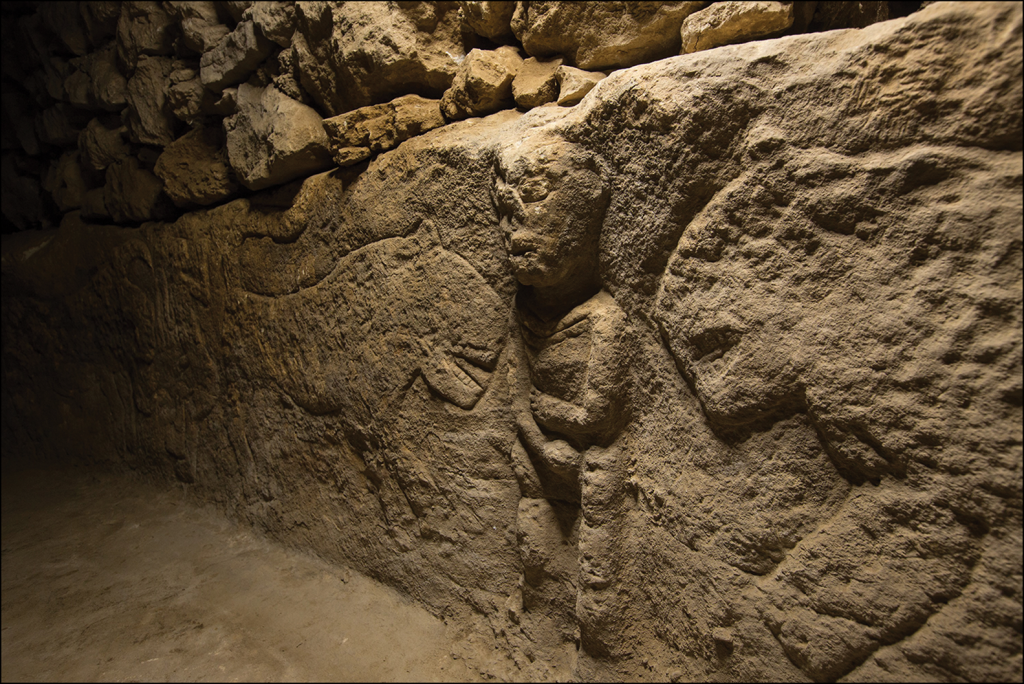
This carving discovered in Turkey could be the world’s oldest narrative art. Photo by K. Akdemir.
“Fragments of a laconic roof and a marble perirrhanterion (water basin used for rituals) confirm the building dates to the Archaic period. The team also discovered other architectural features typically found in ancient temples, including a pronaos (vestibule) and two inner rooms—one of which is a cella, filled with ‘a dense layer of tiles.’ The temple’s discovery alchemizes myth into history.”
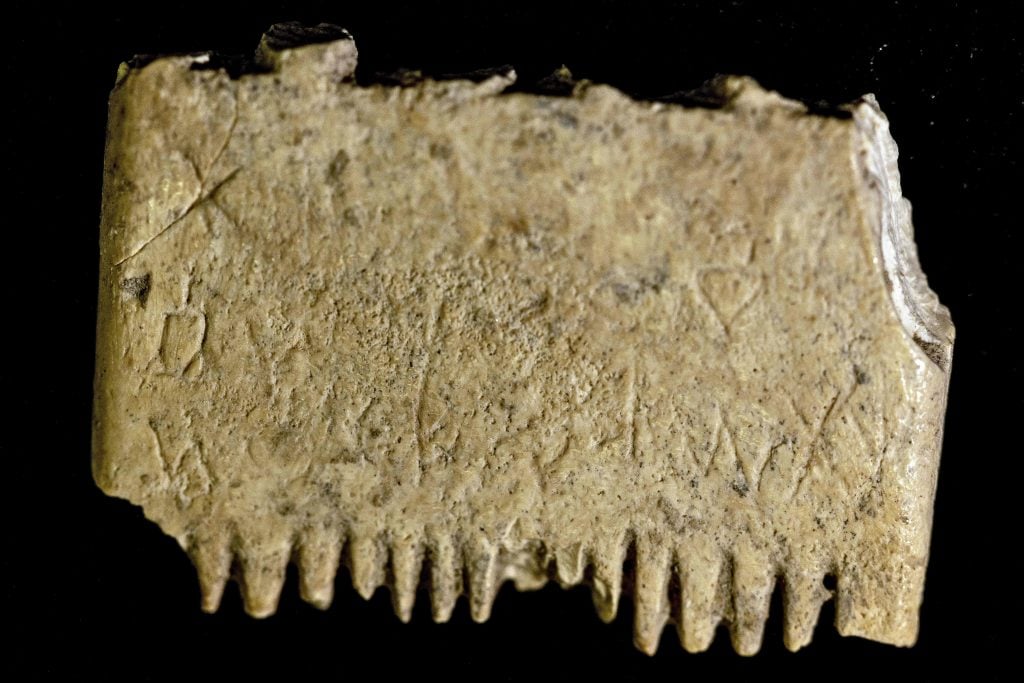
A picture taken at the conservation laboratory of the Hebrew University in Jerusalem on November 8, 2022, shows an ivory comb with a rare inscription that sheds new light on the use of Canaanite language some 3,700 years ago. Archaeologists discovered the artifact in southern Israel at the Tel Lachish site. Experts just noticed that 17 letters inscribed on the comb say “May this tusk root out the lice of the hair and the beard” in Canaanite, the oldest known full sentence in a written alphabet. Photo by Menahem Kahaha/AFP via Getty Images.
“The ancient message on the comb could have easily gone unnoticed. Archaeologists initially mistook the diminutive artifact for a bone because it was covered in dirt, and many of its teeth were broken. And for half a decade, it languished in storage, forgotten until parasitologist and archaeologist Madeleine Mumcuoglu, of the Hebrew University of Jerusalem, put it under the microscope for the first time.”

Over 20 bronze statues and other treasures were found in Tuscany, Italy. Photo courtesy of Italy’s Ministry of Culture.
“The bronzes, which include portrayals of Greco-Roman gods like Hygieia and Apollo, were likely decorations for an ancient bathhouse and may have been thrown into the thermal waters as part of a ritual.”

North America’s oldest human footprints, found in White Sands National Park in New Mexico. Photo courtesy of the National Park Service/U.S. Geological Survey/Bournemouth University, U.K.
“Underwater plants like Ruppia cirrhosa, an underwater ditch grass, can appear much older since they photosynthesize from the water, which often holds ancient carbon, rather than in the atmosphere, which would create a more contemporary picture.”

Collection of pendants from the Harpole Treasure. Photo by Andy Chopping; © MOLA.
“The seventh century C.E. was a time of huge cultural transition as many areas in the U.K. were converting to Christianity. Previously, only men had been given such magnificent burials, suggesting that by around this time women were gaining some status within the new Christian faith. With its pagan roots, the practice of burying people with treasures and goods would die out within just a few decades.”

This carving discovered in Turkey could be the world’s oldest narrative art. Photo by K. Akdemir.
“Etched in deep relief on the panel’s right register is an upright man holding his member. He’s surrounded on either side by a pair of leopards, while on the left side of the carving is another human figure (also featuring an exaggerated phallus) with a bull.”